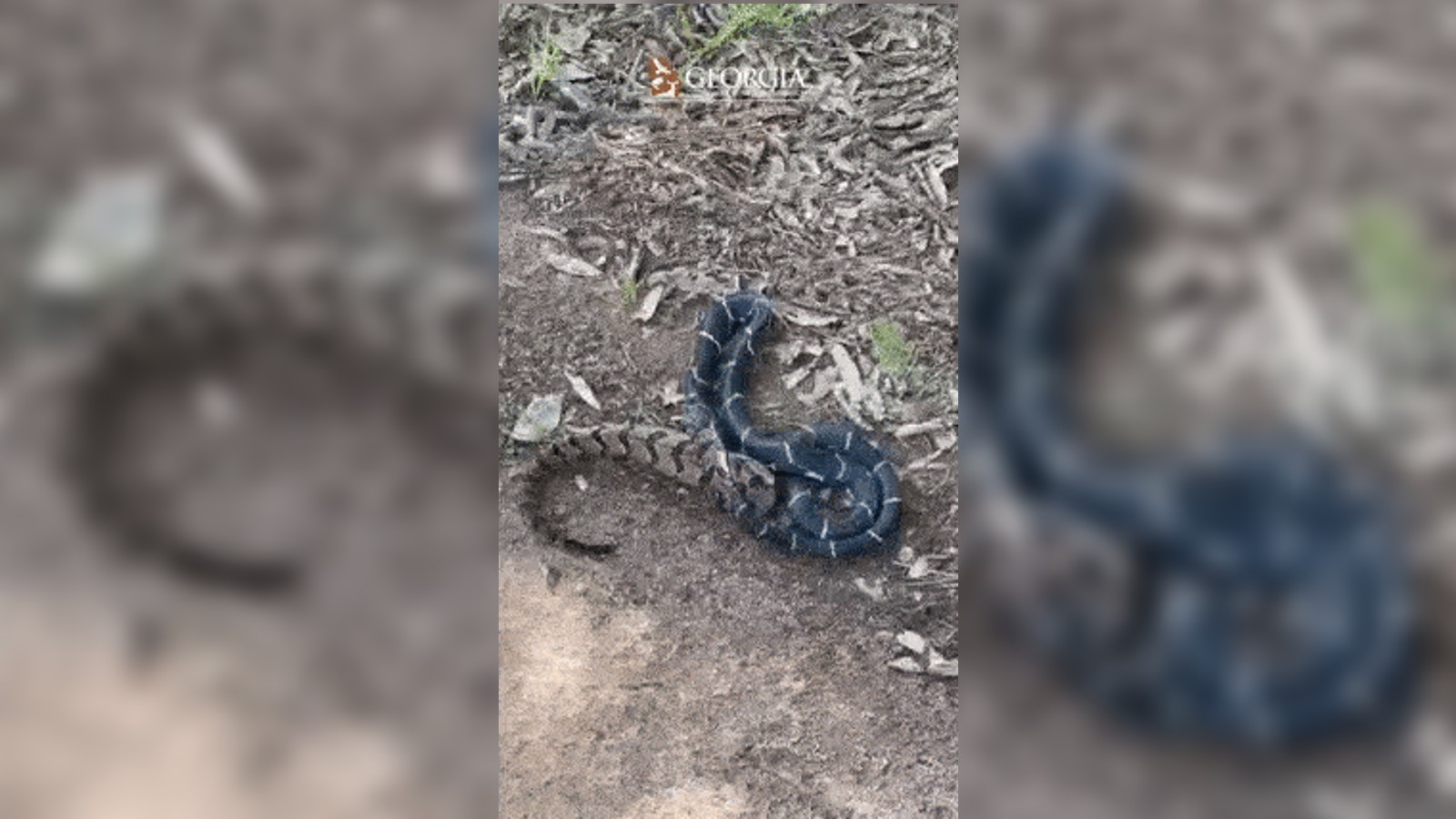Snake caught eating even bigger snake in striking new video
"It's a snake eat snake world out there," experts say.
A daring snake with a big appetite was recently caught in the act of chowing down on an even larger snake. Video footage showed the ravenous reptile as it swallowed a venomous relative headfirst in a mighty gulp.
The unusual sight was filmed in Haddock, Georgia by 82-year-old Tom Slagle, who was surprised to find the entwined serpents near his mailbox; the gruesome meal was already underway when Slagle began recording it. On June 8, officials with the Georgia Department of Natural Resources shared the video on Facebook, with the caption: "It's a snake eat snake world out there."
In the video, an eastern kingsnake (Lampropeltis getula) can be seen slowly moving its flexible lower jaw down the body of a much girthier timber rattlesnake (Crotalus horridus) — the rattlesnake's head and part of its body have already been swallowed. As the larger snake does not appear to be moving at all, it was likely killed by the kingsnake before being eaten.
Related: These spiders take down snakes hundreds of times their size
It's hard to tell from the video how the snakes compared in terms of their body length, as one is already partly devoured by the other. However, timber rattlesnakes have been known to grow to be 6 feet (1.8 meters) long, while eastern kingsnakes reach a maximum length of just 3.9 feet (1.2 m). The rattlesnake in the video is clearly bulkier than the kingsnake, which suggests it may have been heavier.
Many species of snakes are capable of swallowing prey much larger than themselves, such as deer, cows and even humans. However, this behavior does not typically include bigger snakes because when snakes do eat each other, which is common, it is normally the bigger snakes who eat the smaller ones.
Eastern kingsnakes are one of the few species known to eat larger snakes, but they more commonly feast on lizards, rodents, birds, and freshwater turtle eggs. Kingsnakes are constrictors that hunt by biting their prey near the neck, coiling around the animal's body and squeezing tight. While kingsnakes have no venom of their own, they are immune to the toxins of some of their venomous cousins. This allows them to safely dine on rattlesnakes, copperheads and cottonmouths, according to the University of Georgia.
Get the world’s most fascinating discoveries delivered straight to your inbox.
Both species in the video are commonly found across the eastern United States, however, some populations of eastern kingsnake are decreasing rapidly; they are listed as a protected species in Georgia but not in other states, the University of Georgia reported.
Originally published on Live Science.

Harry is a U.K.-based senior staff writer at Live Science. He studied marine biology at the University of Exeter before training to become a journalist. He covers a wide range of topics including space exploration, planetary science, space weather, climate change, animal behavior and paleontology. His recent work on the solar maximum won "best space submission" at the 2024 Aerospace Media Awards and was shortlisted in the "top scoop" category at the NCTJ Awards for Excellence in 2023. He also writes Live Science's weekly Earth from space series.
 Live Science Plus
Live Science Plus






